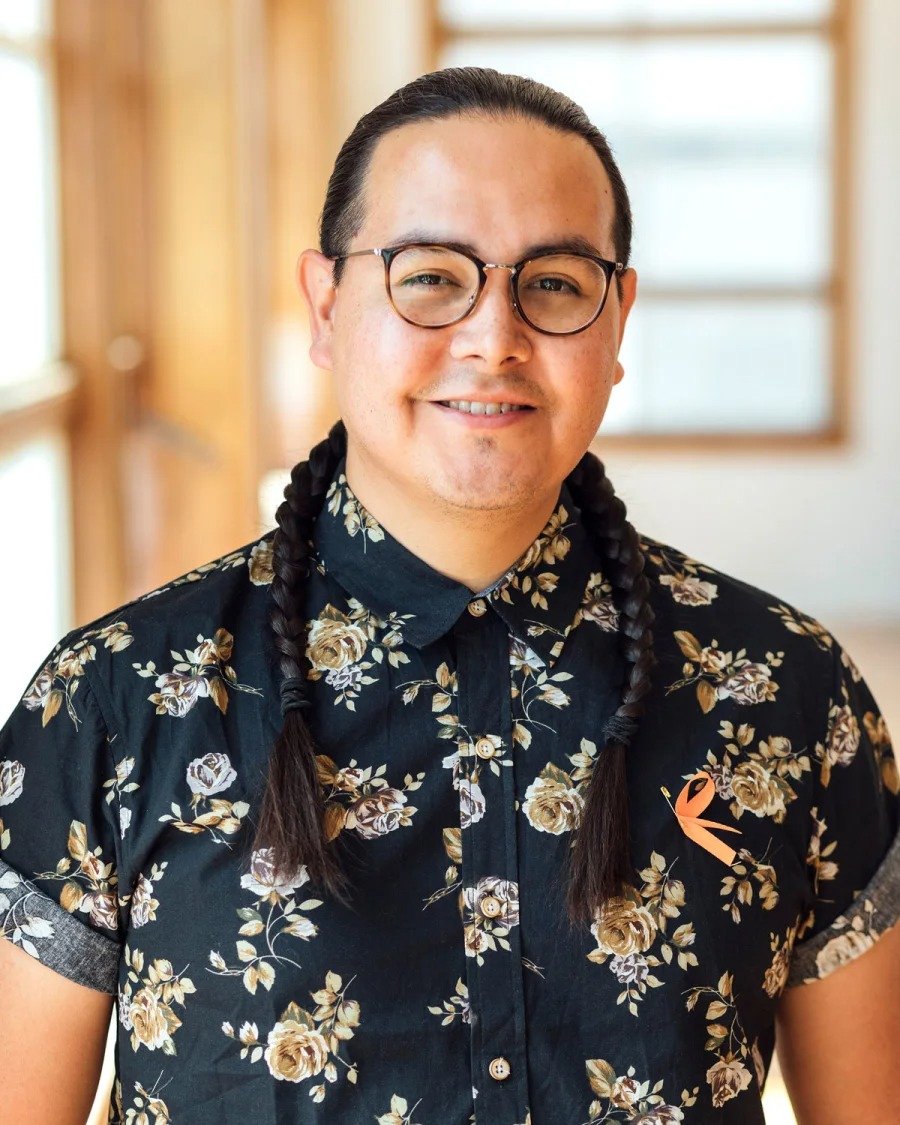Best Trailblazer
Chef Scott Jonathan Iserhoff, smoking a duck “sagabon” style, slowly roasting and spinning the bird on a string over a fire. Photos by Roam Creative, courtesy of Indigenous Tourism Alberta.
Step into the white and grey art deco–style Whiskeyjack Art House in downtown Edmonton to be greeted by the smell of Cree Coffee wafting in the air, mingling with the sweet–savoury scent of chef Scott Jonathan Iserhoff’s three berry brisket barbecue sandwich and duck stew. This is Pei Pei Chei Ow (pronounced “pe–pe–s–chew”), a mostly takeout café, food and education company that’s just one aspect of an immersive cocoon of Indigenous cuisine, art and culture. Artist Lana Whiskeyjack’s art gallery anchors the space, and you’ll find Indigenous–made art, jewellery and pantry items for sale as well.
As a young teen, Iserhoff’s favourite show was Cooking with the Wolfman because First Nations chef David Wolfman “was the only person I could relate to, who had the same skin colour as me, who had a platform, and talked about smoking wild meats and returning to our native diet.” But there was little Iserhoff could relate to at culinary school in London, Ontario, so he dropped out. It was while cooking at Edmonton’s top–rated Uccellino that he realized that he had tired “of cooking other people’s food.” The support of his Ukrainian–born wife Svitlana and a “weird dream” (“I was cooking at Uccellino, and a moose came in, this big animal, and it urinated in my expensive olive oil”) led to a course correction.
For Svitlana, the dream had a clear interpretation: “This is a sign that you have to make your own food. You come alive when you’re doing that.” Iserhoff shifted his focus to the local Edmonton Indigenous community, where bison, not moose, was the meat of choice. Eventually, after a series of “post–colonial Indigenous” food pop–ups and catering gigs, he opened Pei Pei Chei Ow. Meaning “robin” in Omushkegowin (Swampy Cree), it was his grandfather’s childhood nickname for him. “Having a Cree name for our business is so important because just saying the name is both like sharing space, and taking space back,” Iserhoff says.
Chef Iserhoff with his wife Svitlana Kravchuk and daughter Yaroslava Ishkotayow.
Pei Pei Chei Ow’s deep-fried eggplant sandwich with tomato jam and seasonal greens.
The food Iserhoff offers springs directly from his memories of spending time with his grandparents on Attawapiskat First Nation in remote northern Ontario, such as “goose smoking in the teepee and my grandfather roasting goose gizzards for me over the fire,” he says. There was also “bannock, moose stew and the care and love they put into cooking for their children and grandchildren, making sure you left the house or the camp with a full belly before going out to play.”
His dream is to expand into a full–fledged restaurant where he can host various Indigenous chefs to pass on their knowledge to young people in the community who are interested in cooking, but don’t have access to learning opportunities. Just as he is most alive when cooking his own food, he hopes to inject that sense of identity through food to a new generation of Indigenous restaurateurs and chefs. “When I’m cooking,” he explains, “all my stories come back to me.”
Read this article at Air Canada enRoute Magazine.





